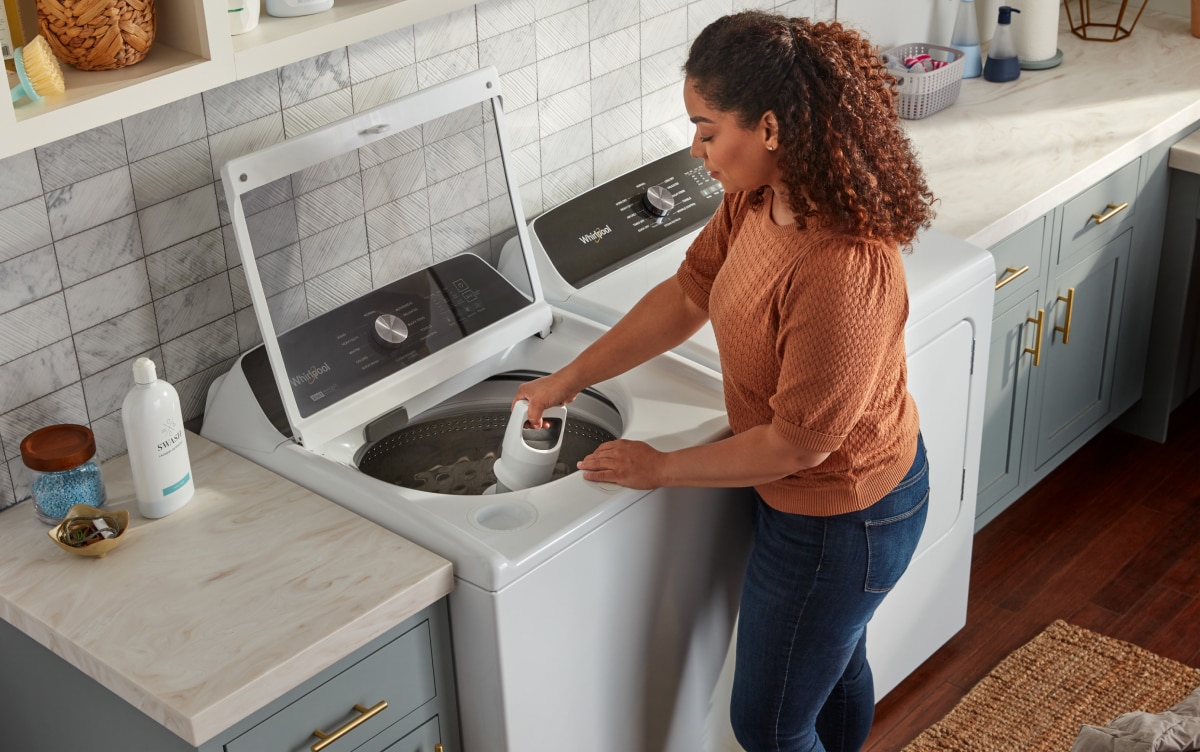When your Whirlpool washing machine’s agitator falters, it can be an agitating situation. But fear not, for with the right knowledge and tools, you can tackle this common appliance problem head-on. This detailed guide will walk you through the steps to diagnose and fix a broken or malfunctioning agitator, empowering you to restore the harmony in your laundry routine.

Image: www.youtube.com
Understanding the Agitator
The agitator, a crucial component of top-load washing machines, is responsible for ensuring proper agitation and cleaning of your laundry. Its rotating motion helps mix detergents and water, remove dirt and stains from fabrics, and prevent tangles. When the agitator stops working or malfunctions, it can significantly compromise the washing performance of your appliance.
Identifying the Problem
Diagnosing an agitator issue can be straightforward. Here are some telltale signs:
-
No agitation: When you start a wash cycle, the agitator remains motionless.
-
Weak or uneven agitation: The agitator moves erratically or seems to struggle to agitate the laundry effectively.
-
Grinding noise: You may hear unusual noises, such as grinding or scraping, coming from the agitator.
Troubleshooting and Repair Steps
Once you’ve identified the problem, it’s time to tackle the fix. Follow these steps:

Image: www.whirlpool.com
1. Check for Blockages:
Over time, lint, hair, and other debris can accumulate around the agitator, hindering its movement. Inspect the agitator and remove any blockages that you find.
2. Inspect the Drive Socket:
The agitator is connected to the drive socket at the bottom of the tub. Loose or damaged drive sockets can prevent proper agitation. Check if the socket is securely attached and free of any cracks or defects. If necessary, replace the drive socket.
3. Replace the Agitator Dogs:
Agitator dogs are small, plastic mechanisms that engage with the drive socket to rotate the agitator. Worn or broken agitator dogs can cause the agitator to slip or malfunction. Remove the agitator and check the condition of the dogs. Replace any damaged or worn parts.
4. Check the Coupler:
The coupler is a rubber component that connects the transmission to the agitator shaft. If the coupler fails, it can prevent power transmission to the agitator. Inspect the coupler for any tears or cracks. If necessary, replace the coupler.
5. Examine the Transmission:
If other components are functioning properly, the issue may lie with the transmission. The transmission powers the agitator and, if faulty, can cause the agitator to fail. Contact a qualified appliance repair technician to diagnose and repair any transmission problems.
Additional Tips:
-
Use the Right Detergent: Excessive detergent can create suds that can interfere with the agitator’s movement. Use the recommended amount of detergent specified by the manufacturer.
-
Don’t Overload: Overloading the washing machine can put excessive strain on the agitator, potentially causing damage.
-
Regular Maintenance: Clean the agitator and check for any visible damage periodically to prevent future issues.
How To Fix Agitator On Whirlpool Washing Machine
Conclusion
Fixing an agitator on a Whirlpool washing machine can be accomplished with the right approach and knowledge. By following the troubleshooting steps outlined in this guide, you can restore your washing machine to its optimal working condition, ensuring that your laundry continues to come out clean and fresh. Remember, if you encounter any significant issues or are unsure about any repairs, don’t hesitate to consult a qualified appliance repair technician.







